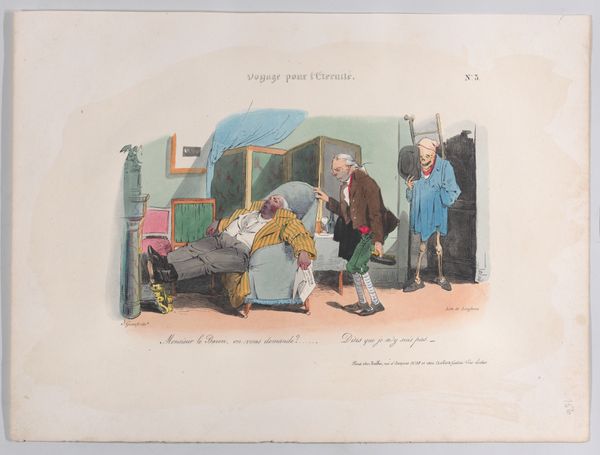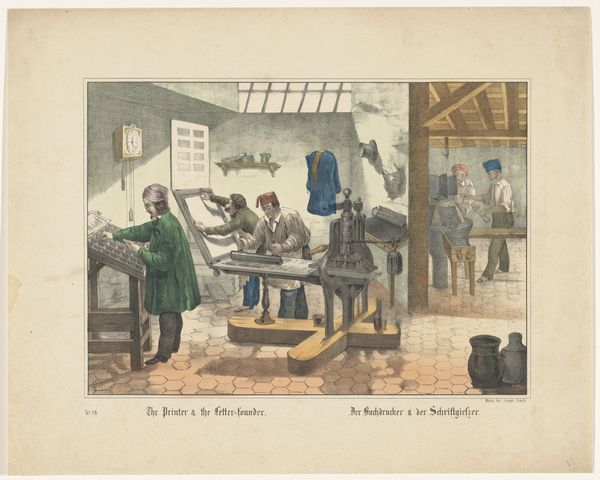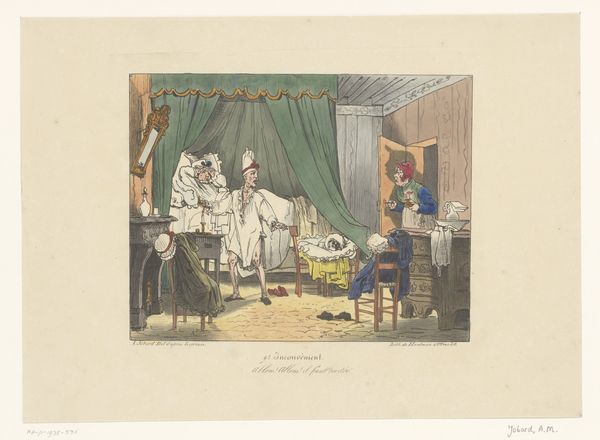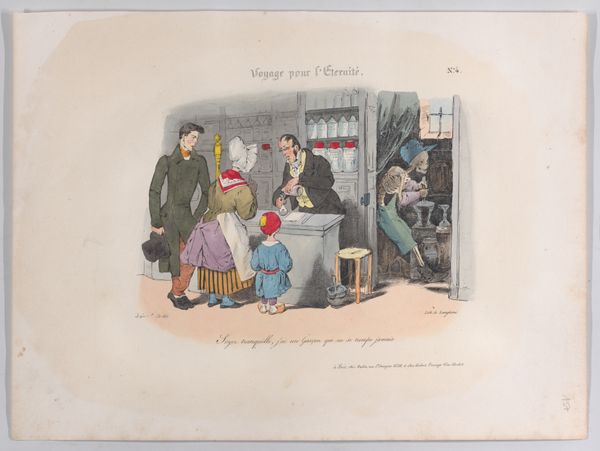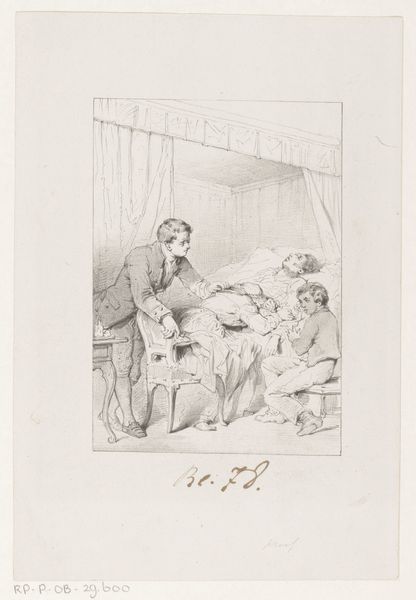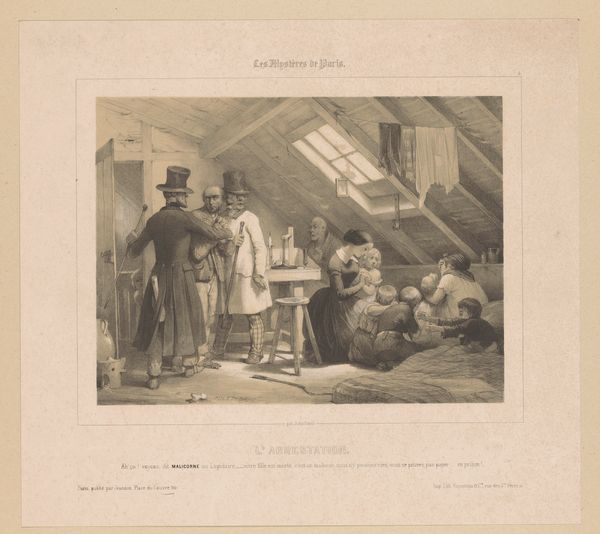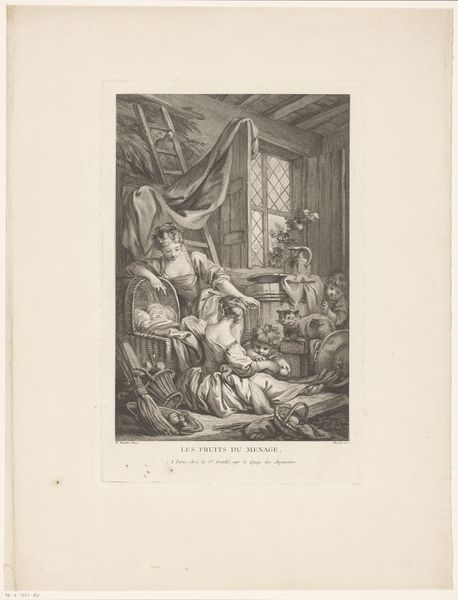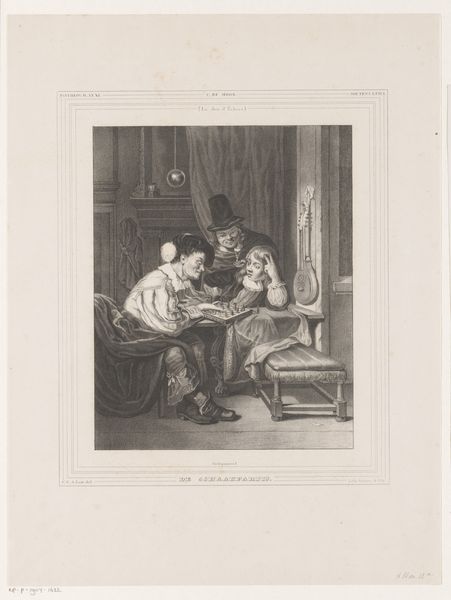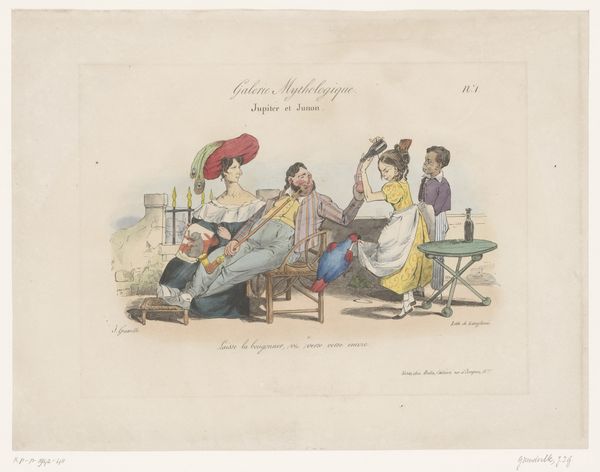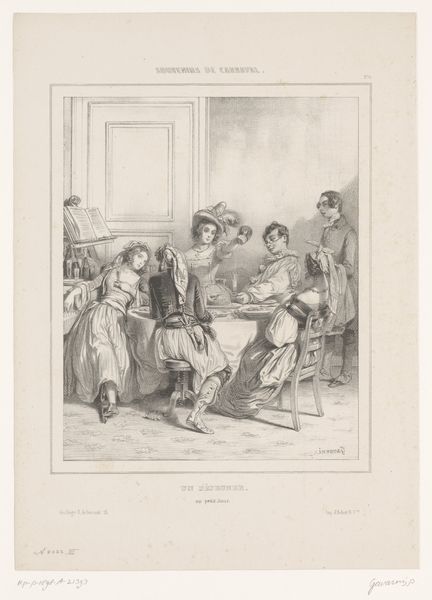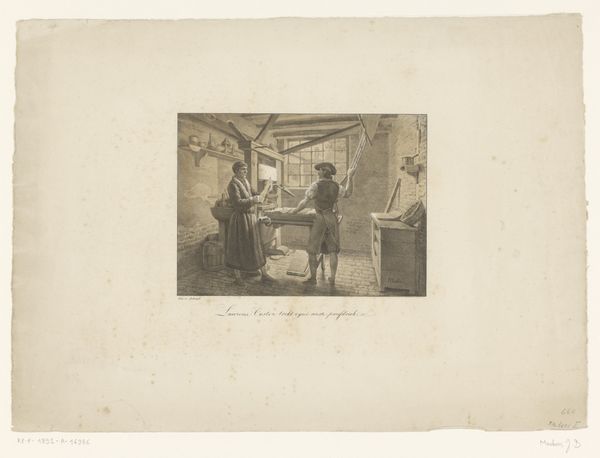
lithograph, watercolor
#
portrait
#
allegory
#
lithograph
#
caricature
#
watercolor
#
romanticism
#
watercolour illustration
#
genre-painting
#
watercolor
Dimensions: height 194 mm, width 264 mm
Copyright: Rijks Museum: Open Domain
Editor: This lithograph, "Baron wordt gehaald door een doodgraver en de Dood" or “Baron Being Taken by a Grave Digger and Death” by Jean Ignace Isidore Gérard Grandville, dating to 1830, is darkly humorous! I find the depiction of death, almost sheepish, standing by a doorway particularly striking. What sort of societal commentary might Grandville be offering here? Curator: The key lies in understanding the sociopolitical climate of 1830s France. Caricature flourished as a form of political dissent. Grandville cleverly utilizes allegory and satire to critique the bourgeoisie. Notice how the Baron, seemingly ill or indolent, reclines in comfort, oblivious to the impending doom signified by the grave digger and death. Editor: So, the comfort in that bedroom is not to be envied necessarily? It appears to have come at the expense of others! Curator: Precisely. Grandville is indicting the perceived decadence and detachment of the upper class from the realities of mortality and societal inequalities. What do you think about the color choices employed, particularly regarding the figure of death and his expression? Editor: Well, death has an apologetic affect! The pale hues add to a sense of fragility, which undercuts its conventional scary role. How might contemporary audiences have responded to that role reversal? Curator: This subversion likely resonated with a public weary of social hierarchies and economic disparities. Grandville, through publications like "La Caricature," gave visual voice to those sentiments, thus challenging the status quo and influencing public opinion. This romanticized scene actually engages social satire in very clever ways. Editor: That is fascinating! I never would have picked up on that amount of cultural criticism just from the artwork. Curator: It highlights the powerful role of art in shaping public discourse. Analyzing art through the lens of history allows us to appreciate its full depth and resonance. Editor: I'll definitely look for more examples of social commentary in art of this period. Thank you.
Comments
No comments
Be the first to comment and join the conversation on the ultimate creative platform.
